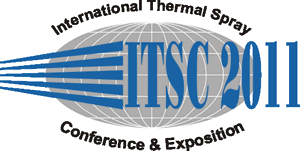
|
2936 |
|
Electric resistivity of thermally sprayed Cr2O3-TiO2 coatings |
|
Richard Trache* / Fraunhofer IWS Dresden, Germany Lutz-Michael Berger/ Fraunhofer Institute for Laser and Beam Technology, FhG IWS, Germany Laura-Filofteia Toma/ Fraunhofer Institute for Laser and Beam Technology, FhG IWS, Germany Sabine Stahr/ Dresden University of Technology, Chair for Laser and Surface Technology, Germany Rogerio S. Lima/ National Research Council of Canada, Industrial Materials Institute, NRC-IMI, Canada Basil R. Marple/ National Research Council of Canada, Industrial Materials Institute, NRC-IMI, Canada |
|
In this study, the influence of selected spray parameters on the electrical resistivity of thermally sprayed coatings has been studied. Ceramic feedstock powders from the system TiO2-Cr2O3 with contents of 10 and 20 mass% Cr2O3 were deposited by APS and HVOF. Particle temperature and velocity were analyzed by DPV-2000 and the coating surface temperature was measured by an infrared camera during the deposition process. In case of HVOF, cooling stops with two different interval times were performed between the single passes of deposition. Thereby, it was possible to reduce the mean coating surface temperature by about 20 K. Impedance spectroscopy was used to investigate the electrical resistivity of the coatings and was correlated with microstructure and phase composition (XRD). It was found that phase transformations occur in result of the spray process. In the coatings the n-phase of the TiO2-Cr2O3 system and rutile were found. Though, the content of rutile depends on the spray processes and the deposition parameters that were used. The electrical resistance of coatings deposited by HVOF can be correlated to the chromium oxide content in the feedstock powder. It was also found that the surface temperature influences the coating properties. Concerning the coatings resulting from APS, the different mixtures of the plasma gases (Ar-H2 and Ar-N2) significantly affected the electrical resistivity. The reducing properties of the Ar-H2 were affirmed. As a result of this, ceramic coatings with very low electrical resistivity (~2 ©"m) were achieved. |